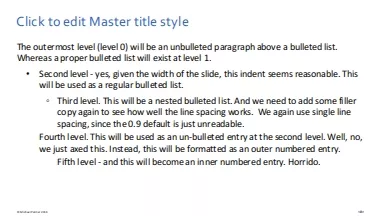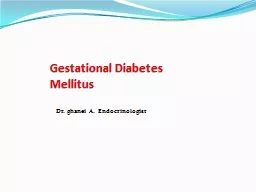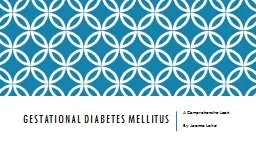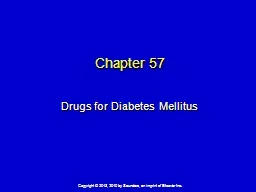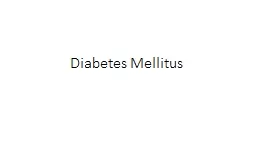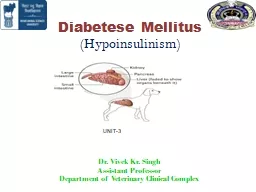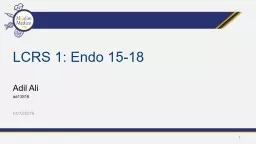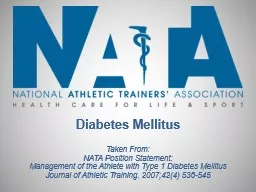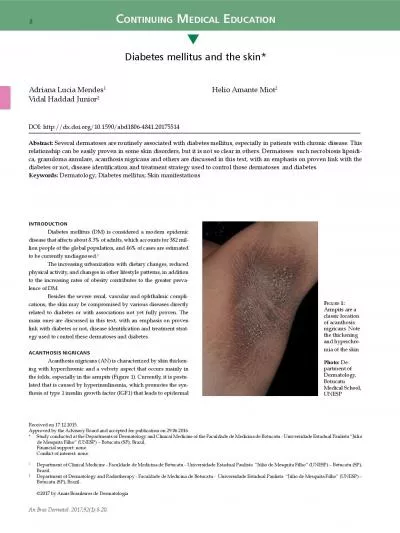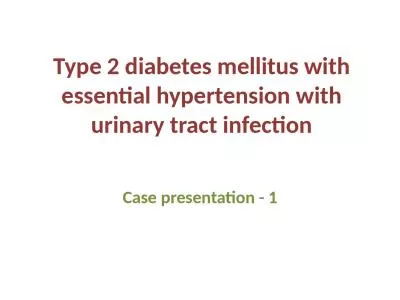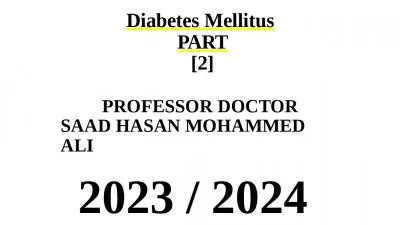PPT-Diabetes mellitus Diabetes mellitus
Author : elina | Published Date : 2022-02-12
Whats in a name diabetes marching throughurine is produced incessantly mellitus honeysweetas opposed to diabetes insipidus insipidwithout flavor What does the adjective
Presentation Embed Code
Download Presentation
Download Presentation The PPT/PDF document "Diabetes mellitus Diabetes mellitus" is the property of its rightful owner. Permission is granted to download and print the materials on this website for personal, non-commercial use only, and to display it on your personal computer provided you do not modify the materials and that you retain all copyright notices contained in the materials. By downloading content from our website, you accept the terms of this agreement.
Diabetes mellitus Diabetes mellitus: Transcript
Download Rules Of Document
"Diabetes mellitus Diabetes mellitus"The content belongs to its owner. You may download and print it for personal use, without modification, and keep all copyright notices. By downloading, you agree to these terms.
Related Documents

